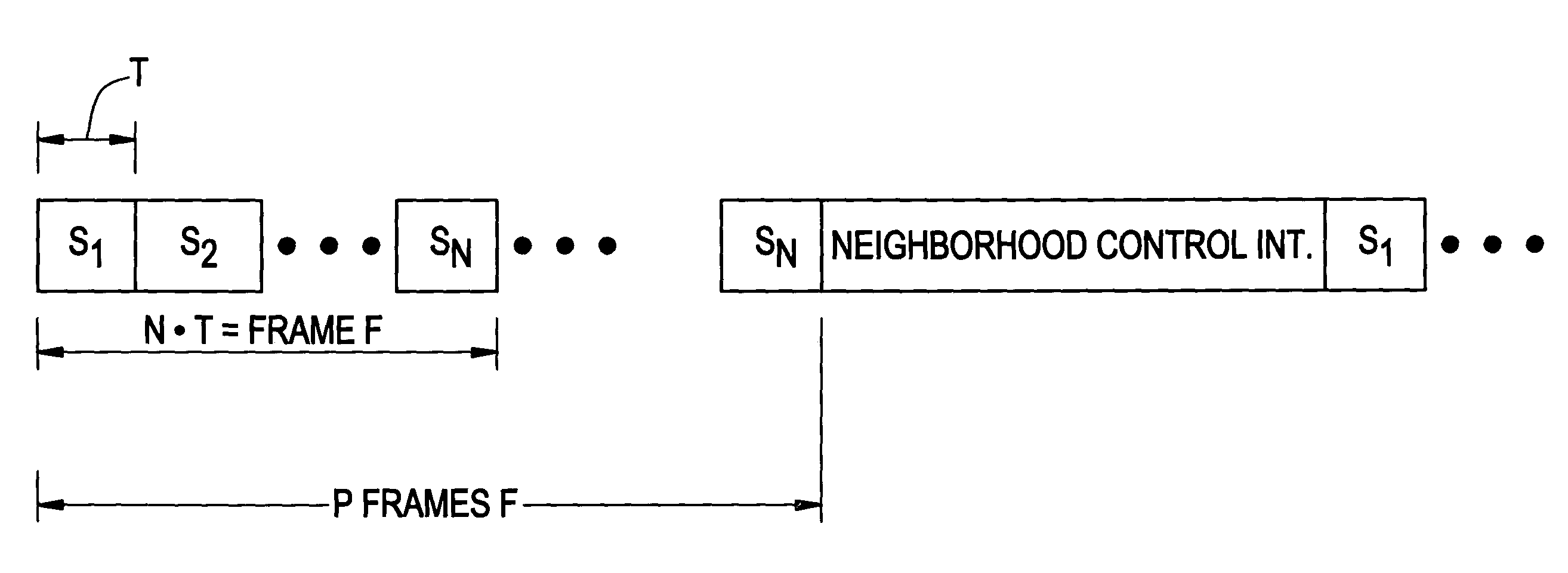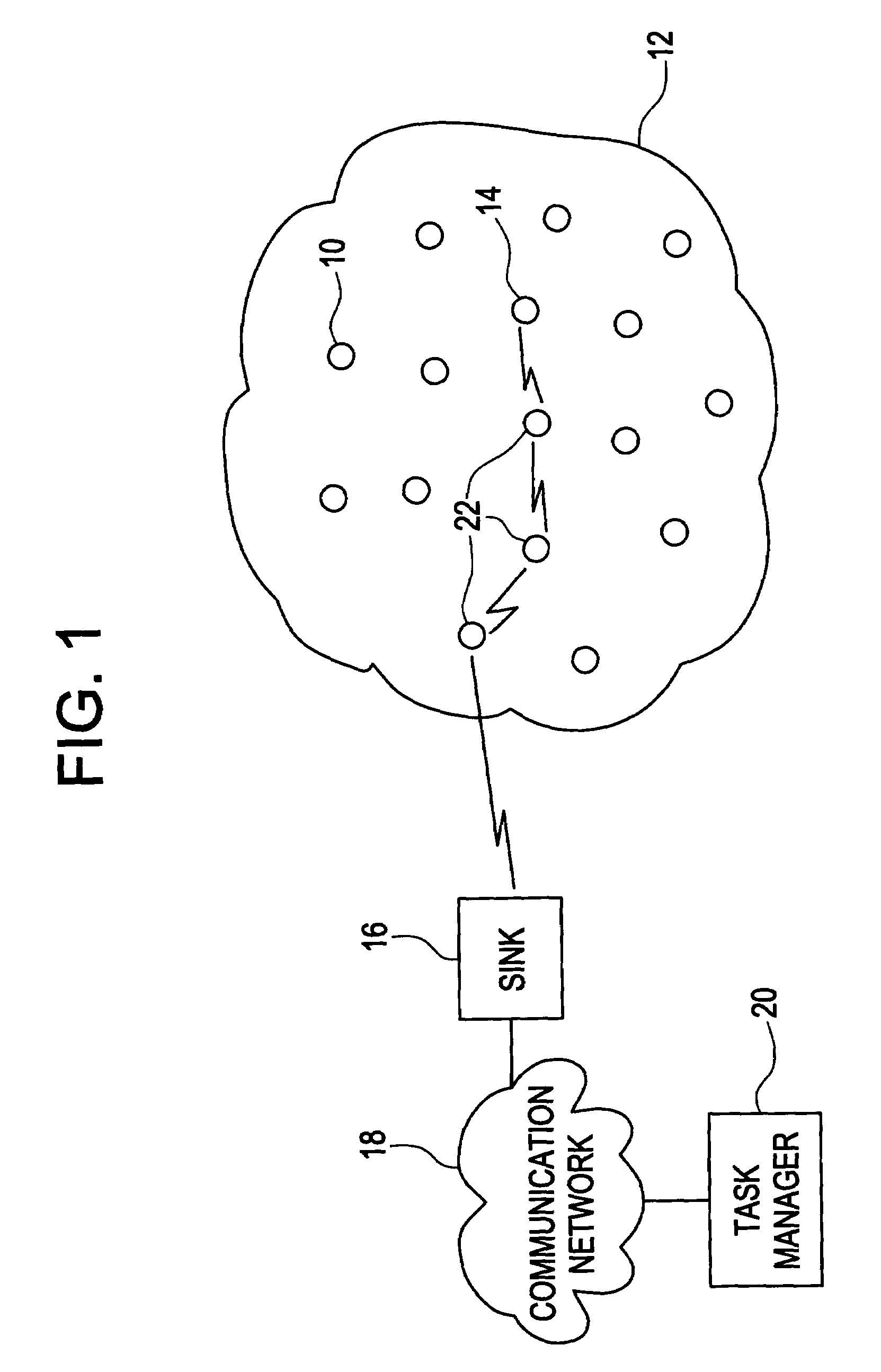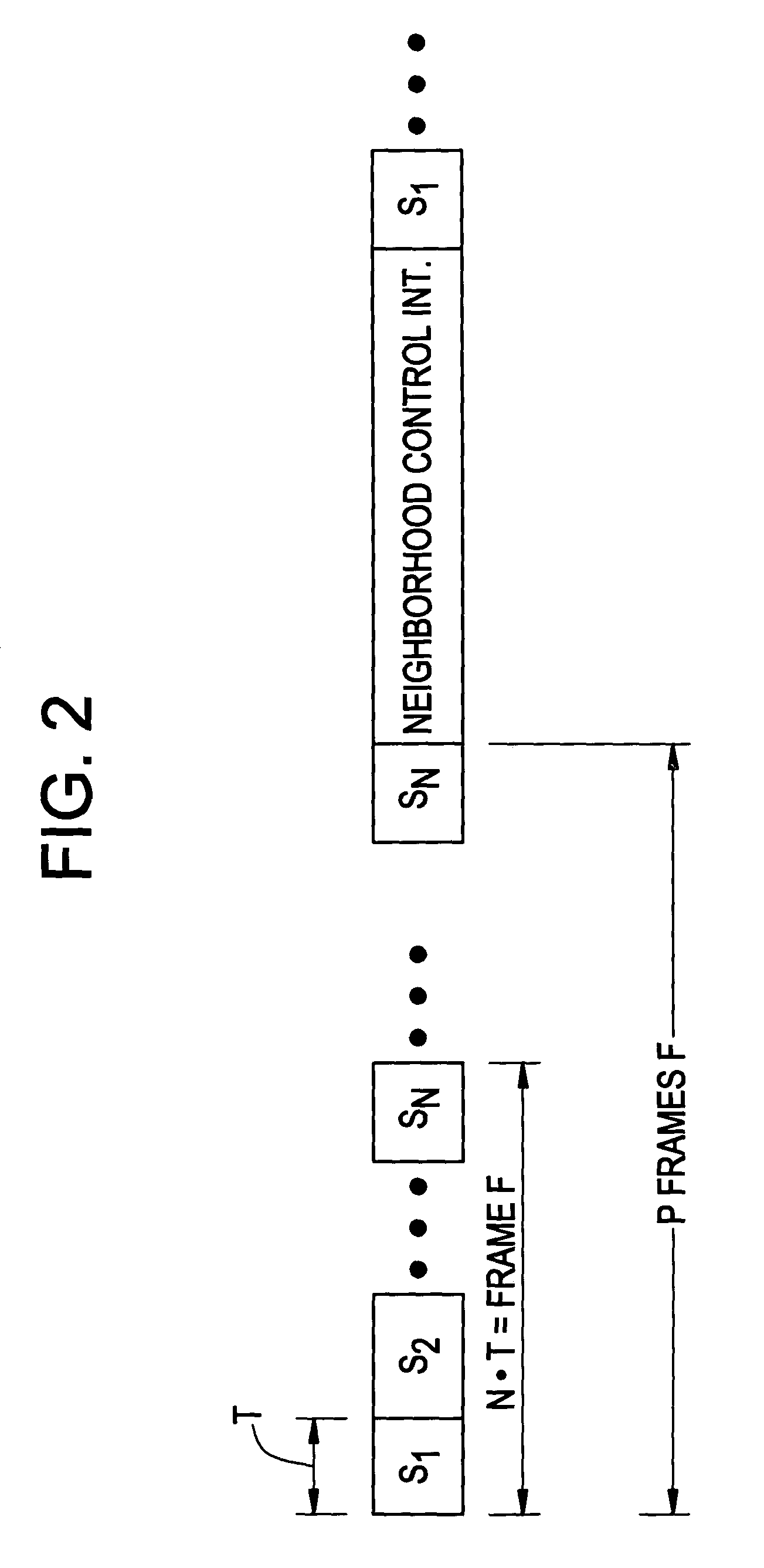Adaptive sleeping and awakening protocol for an energy-efficient adhoc network
a technology of adhoc networks and sleep protocols, applied in data switching networks, high-level techniques, instruments, etc., can solve the problems of more energy consumed by nodes, and achieve the effect of reducing processing burden and energy consumption of nodes
- Summary
- Abstract
- Description
- Claims
- Application Information
AI Technical Summary
Benefits of technology
Problems solved by technology
Method used
Image
Examples
Embodiment Construction
[0019]The methodologies of the present invention for multiple node adhoc networks will be described in the context of a sensor network; and more particularly, the sensor network of FIG. 1. However, it will be understood that the present invention is not limited to the sensor network of FIG. 1 or strictly sensor networks.
[0020]The present invention provides methodologies for scheduling the awakening of nodes and for adaptively setting sleep periods of nodes in a synchronous multiple node adhoc network. Synchronizing multiple node adhoc networks, such as the sensor network of FIG. 1, is well-known. For example, according to one well-known technique each of the nodes, for example sensor nodes 10, includes a global positioning sensor (GPS) receiver. This technique allows for synchronization between nodes to within a micro-second. Other methods of ranging and distributed synchronization within multiple node network are also well-known.
[0021]Because the network is synchronized, a slot and...
PUM
 Login to View More
Login to View More Abstract
Description
Claims
Application Information
 Login to View More
Login to View More - R&D
- Intellectual Property
- Life Sciences
- Materials
- Tech Scout
- Unparalleled Data Quality
- Higher Quality Content
- 60% Fewer Hallucinations
Browse by: Latest US Patents, China's latest patents, Technical Efficacy Thesaurus, Application Domain, Technology Topic, Popular Technical Reports.
© 2025 PatSnap. All rights reserved.Legal|Privacy policy|Modern Slavery Act Transparency Statement|Sitemap|About US| Contact US: help@patsnap.com



